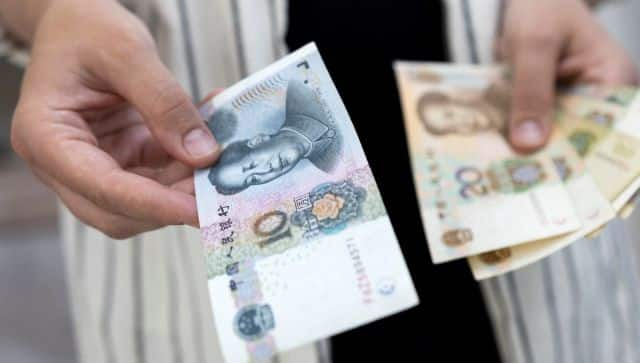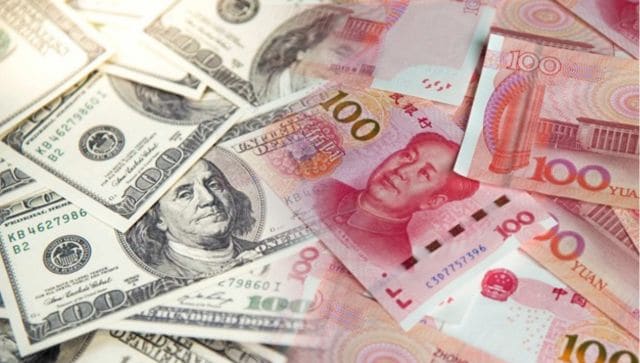WASHINGTON: India has developed a world-class digital public infrastructure (DPI) to support its sustainable development goals with its journey having lessons for other countries embarking on their own digital transformation, IMF has said in a working paper, noting that digitalization has supported formalization of India’s economy and Aadhaar has helped in direct transfer of payments to beneficiaries while reducing leakages.
The working paper ‘Stacking up the Benefits Lessons from India’s Digital Journey” said that the government played a catalytic role, acting as an anchor client and establishing institutions to ensure continuity in India Stack’s operations.
It said that using this digital infrastructure, India was able to quickly provide support to an impressive share of poor households during the Covid-19 pandemic.
The paper said that using a digital backbone allowed India to scale its vaccine delivery quickly and overcome challenges such as large-scale internal migration. The technology underlying CoWIN, a digital platform developed by India to capture the Covid-19 vaccination programme, has been deployed in Indonesia, Philippines, Sri Lanka and Jamaica to help facilitate their vaccination programmes.
The paper lauded Pradhan Mantri Jan Dhan Yojana (PMJDY) launched by the Narendra Modi government and said sound policies led to a competitive, open, and affordable telecommunications market and lowering of cost of mobile data by 90 percent lead to a jump in data usage.
The paper said that demonetization led to greater use of other forms of payment, including the UPI.
It said Aadhaar helped facilitate the transfer of social safety net payments directly from the government treasury’s accounts to beneficiaries’ bank accounts, helping to reduce leakages, curb corruption and providing a tool to effectively reach households to increase coverage.
“The Government of India estimates that, up to March 2021, about 1.1 percent of GDP in expenditure was saved due to the digital infrastructure and other governance reforms,” the paper said.
It said that using this digital infrastructure India was able to quickly provide support to an impressive share of poor households during the pandemic.
DPI refers to a set of shared digital building blocks, such as applications, systems, and platforms, powered by interoperable open standards or specifications. India Stack is the collective name of a set of commonly used DPIs in India; it consists of three different layers–unique identity (Aadhaar), complimentary payments systems (Unified Payments Interface, Aadhaar Payments Bridge, Aadhaar Enabled Payment Service), and data exchange (DigiLocker and Account Aggregator).
“Together they enable online, paperless, cashless, and privacy-respecting digital access to a variety of public and private services. The benefit of this investment is felt across the country and served India well during the pandemic,” the paper said.
It said that in the first months of the Covid-19 pandemic, about 87 per cent of poor households received at least one benefit.
“India Stack has been used as a platform to foster innovation and competition, expand markets, close gaps in financial inclusion, boost government revenue collection, and improve public expenditure efficiency.”
The paper said digital payments are now ubiquitous and UPI accounts for 68 percent of all payment transactions by volume.
“The use of digital payments has expanded the customer base of smaller merchants, documenting their cash flow and improving access to finance. Roughly 4.5 million individuals and companies have benefited from easier access to financial services through the Account Aggregator, since it was first launched in August 2021, and adoption is increasing rapidly,” the paper said.
It said digitalization has also supported formalization of the economy, with around 8.8 million new taxpayers registered for the GST between July 2017 and March 2022, “contributing to buoyant government revenues in recent years”.
“Government service provision is streamlined; for example, citizens can access documents issued by state and central government through one platform. Similarly, the India Stack has digitized and simplified Know Your Customer procedures, lowering costs; banks that use e-KYC lowered their cost of compliance from $12 to 6 cents. The decrease in costs made lower income clients more attractive to service and generated profits to develop new products,” the paper said.
“India’s journey highlights lessons for other countries embarking on their own digital transformation. India Stack’s development is guided by a foundational building blocks approach, and a focus on supporting innovation across the ecosystem,” it added.
The IMF paper said that the building block approach involves unbundling the components of the solution to a set of problems and identifying a minimal common core.
“This modular approach fosters innovation, allowing solutions to be built to multiple problems based on the common core. For a large and diverse country such as India, a building block approach provides those closer to the problem with the basic tools to create tailored solutions.”
It said a focus on supporting a vibrant ecosystem implies the need for interoperability between the different DPIs and a competition-focused design.
“In India, interoperability was supported through open standards, allowing anyone to utilize the functionality provided by India Stack. These principles are applied to other DPIs in education and health, including the Covid-19 vaccine and distribution platform, CoWIN,” the paper said.
“The government played a catalytic role, acting as an anchor client and establishing institutions to ensure continuity in India Stack’s operations. DPI is an example of a two-sided market where the value of the platform increases for both participants as the numbers on each side increases.
“By using the DPI to provide social benefits, the government encouraged take up by individuals and gave service providers the comfort of access to a large client base. The government also promoted the use of technology as ‘utilities’ and created a category of not-for-profit companies with a public purpose (National Information Utilities),” the paper noted.
It said that National Payments Corporation of India, an initiative between the Reserve Bank of India and the Indian Banks Association, which unites and operates retail payments and settlement system, is an example of such a company.
“This is one strategy to strike a balance between curbing monopoly rents and providing these services effectively and efficiently, without the various human resources and procurement challenges that often plague large government projects. The tax administration also played a pioneering role in rolling out a tax ID (PAN) using an innovative PPP approach, from where important lessons were drawn to develop Aadhaar.”
The IMF paper said that a set of enabling policies in the financial and telecommunications sector also supported the uptake of India Stack.
“In 2014, there was a push by the government to provide access to a no-frills, low-cost bank account, that doubled the coverage of individuals with bank accounts. The scheme targeted the financially underserved, especially rural women. Under this initiative 462.5 million of bank accounts were opened in both urban as rural areas as of August 2022,” the paper said.
The paper said that in late 2016, India enacted a demonetization policy where large currency notes were invalidated.”
“While it was disruptive, demonetization led to greater use of other forms of payment, including the UPI. Sound policies, such as foreign investment liberalization and the prohibition of discriminatory data tariffs, led to a competitive, open, and affordable telecommunications market. The entry of a new network operator in 2016 lowered the cost of mobile data by 90 percent leading to a jump in data usage from 154 MB/month in 2015 to 15.8 GB/month in 2021.”
The paper said certain features of India’s journey would be difficult to replicate elsewhere, but these are not preconditions for success.
“The in-house development of Aadhaar, supported by systems integrators firms, was feasible in India due to the high level of capacity in IT within its domestic labour market. This allowed India to avoid vendor lock-in and lack of interoperability and created a need for sufficient resources and capacity to continue maintaining and developing the infrastructure.”
The IMF paper said that other countries have approached this challenge differently, including by using open-source software under the format of digital public goods shared between countries.
“These types of resource and knowledge-sharing initiatives mean that governments with shallower IT capacity can implement DPI. There are also features arising out of India’s specific context which may not be applicable for others. For example, to access the full functionality of India Stack, individuals need access to a smartphone and a bank account. For other countries with low adoption of smartphones and lack of access to banks, payments systems based on mobile money that can be used on a feature phone are the dominant form of digital payment,” the paper said.
It said to maximize India Stack’s potential there are challenges to be addressed.
“Despite significant progress, digital literacy remains low in India, and represents a barrier to engaging with DPI-based solutions. The digital divide appears along familiar geographic, gender and income lines. A mere 14.9 per cent of rural households have internet access, compared to 42 per cent among urban households. Women are more likely to be digitally illiterate, particularly among low-income groups. The authorities are working to address this issue through various training initiatives as well as public access outlets, where users are supported to access government services.”
The working paper said that the accessibility of UPI on feature phones and offline modes are also being explored.
It said comprehensive data protection legislation is still missing in India and a robust data protection framework is essential to “protect citizens’ privacy, prevent companies and governments from indiscriminately collecting data, and holding companies and governments accountable for data breaches to incentivize appropriate data handling and adequate investments in cybersecurity”.
The IMF paper said DPI can also help support efforts to make social assistance more resilient and adaptable.
“For example, Aadhaar can be used to exchange data between various schemes across states. Finally, leveraging the DPI, India could improve significantly the timelines, quality, and coverage of the general government fiscal reports, enhancing at the same time fiscal transparency for its citizens, a key issue to improve public sector accountability,” the paper said.
Luis E Breuer, IMF Senior Resident Representative to India, said in a tweet that India’s digital public infrastructure is transforming people’s lives.
“India has built a world-class digital public infrastructure that has lessons for many countries. The latest research by @IMFnews shows how it is transforming the economy and peoples’ lives,” he said.
Spotlight On Digital Revolution: Experts On India’s Digital Story | News 18 Rising India | CNBC TV18 | Watch (msn.com)



